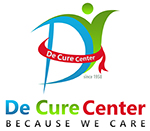Plastic Surgery
Plastic surgery is the branch of surgery specializing in repairing and reconstructing missing or damaged tissue and skin, usually because of surgery, illness, injury or an abnormality present from birth.
The main aim of plastic surgery is to restore the function of tissues and skin to as close to normal as possible. Improving the appearance of body parts is an important, but secondary, aim.
Plastic surgery is different to cosmetic surgery, which is surgery carried out solely to change a healthy person’s appearance to achieve what they feel is a more desirable look.
Surgeons can reshape the appearance of body parts through cosmetic surgery. Some of the most common body parts people want to improve through surgery includes
- Breasts: Increase or reduce the size of breasts or reshape sagging breasts
- Ears: Reduce the size of large ears or set protruding ears back closer to the head
- Eyes: Correct drooping upper eyelids or remove puffy bags below the eyes
- Face: Remove facial wrinkles, creases or acne scars
- Hair: Fill in balding areas with one’s own hair
- Nose: Change the shape of the nose
- Tummy: Flatten the abdomen
Plastic surgery techniques
Plastic surgery uses a wide range of reconstructive techniques, but the main ones are:
- skin grafts – where parts of healthy skin from an unaffected area of the body are removed and used to replace lost or damaged skin
- skin flap surgery –where a piece of tissue from one part of the body is transferred to another, along with the blood vessels that keep it alive; it’s called flap surgery because the healthy tissue usually remains partially attached to the body while it is repositioned
- tissue expansion – surrounding tissue is stretched to enable the body to “grow” extra skin, which can then be used to help reconstruct the nearby area
As well as these main techniques, plastic surgeons use a wide range of other methods, such as fat transfer or grafting (where fat is removed from one area and inserted in another area, usually to correct unevenness), vacuum closure (where suction is applied to a wound through a sterile piece of foam to draw out fluid and encourage healing), camouflage make-up or cream, and prosthetic devices, such as artificial limbs.
Risks of plastic surgery
As with any type of surgery, there are risks and complications associated with plastic surgery. The degree of risk will depend on a number of factors, including whether the surgery is to a small or large area of tissue and the overall health of the person having the procedure.
Some procedures carry specific risks, but general risks include:
- pain and discomfort
- infection
- scarring
- the failure of the repaired area of skin, due to a restricted blood supply

